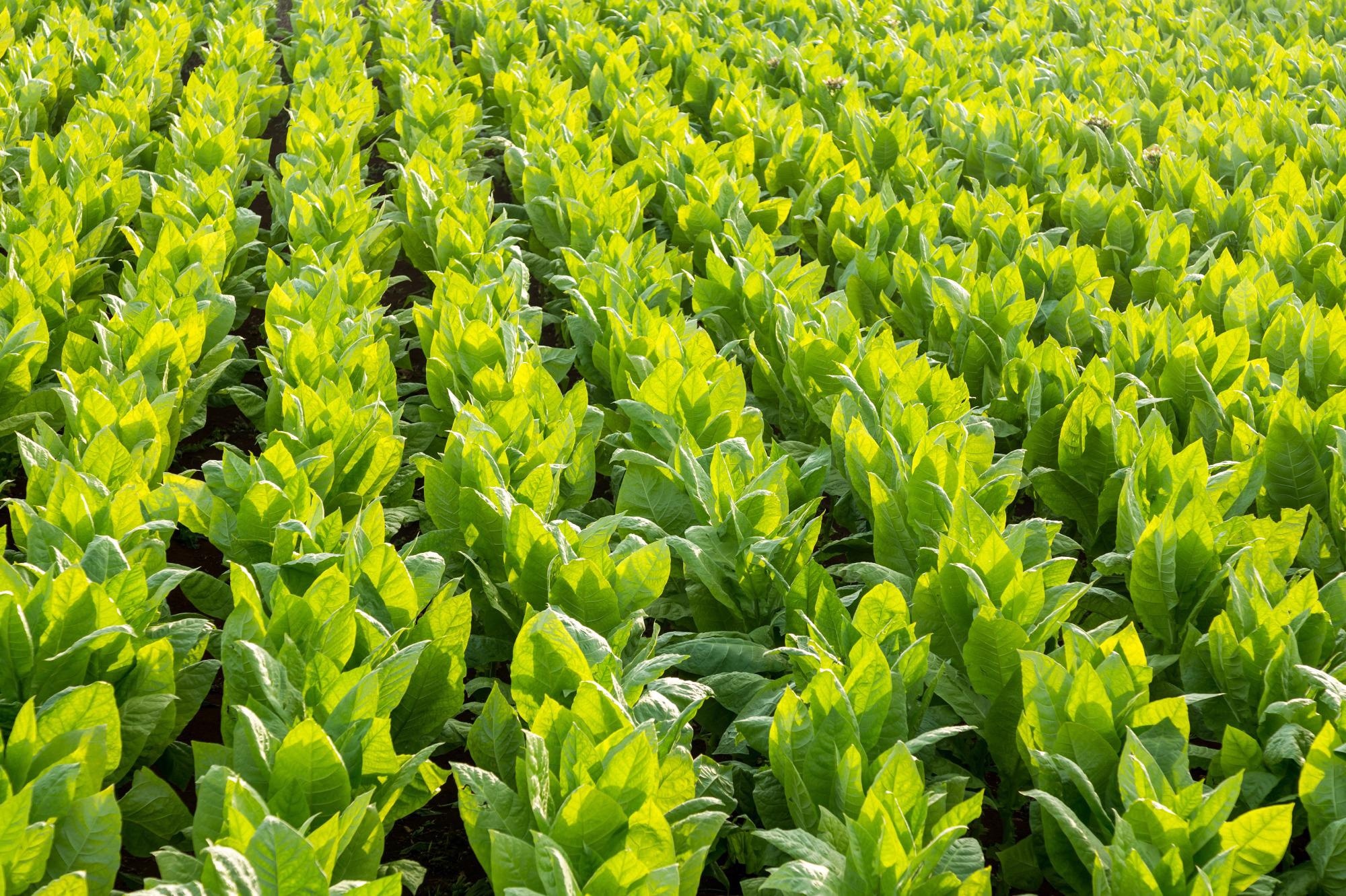Researchers from the University of Illinois and the U.S. Department of Agriculture have grown genetically modified tobacco plants that exhibit less energy-intensive photorespiration characteristics. These plants have higher photosynthetic quantum efficiency and yield 26% more total biomass than wild type tobacco under heated conditions.

Image Credit: Shutterstock.com/Ivana Vrnoga
C3 plants, including rice, wheat, soybean and barley, represent about 95% of Earth's plant biomass. They are susceptible to increased photorespiration as temperatures rise. This happens because the key ribulose-1,5-bisphosphate carboxylase-oxygenase (Rubisco) enzyme fixes oxygen (O2), instead of carbon dioxide (CO2), onto ribulose bisphosphate (RuBP) molecules. This results in energetically costly recycling pathways translating into large yield losses in crop growth.
Recently published in Plant Biotechnology Journal, this study provides new pathways to sustainable C3 crop production in a globally warming climate environment.
A Short Introduction to Carbon Fixation
In eukaryotic cells, CO2 is not converted into sugar molecules directly because this would result in an excessive loss of energy. Instead, energy is produced in a multistage cycle called the Calvin process, which involves carboxylation, reduction reactions and ribulose 1,5-bisphosphate (RuBP) regeneration.
These reactions, which occur inside the stroma of cells, use the ATP and NADPH produced from light-dependent reactions to produce sugar molecules. This chain of reactions is also referred to as carbon fixation. Rubisco (ribulose-1,5-bisphosphate carboxylase-oxygenase) is the key activating agent in these reactions.
C3 carbon fixation is the most common metabolic pathway for carbon fixation during photosynthesis. During this process, carbon dioxide (CO2) and ribulose bisphosphate (RuBP) - a 5-carbon sugar molecule - are converted into two molecules of 3-phosphoglycerate.
C3 plants lose up to 97% of their water through perspiration. As temperatures rise, they shut their stomata to reduce water loss, thus preventing greater quantities of CO2 from entering their leaves. This lowers the CO2 to O2 ratio in the leaves. Thus, Rubisco incorporates O2 into RuBP more readily (instead of CO2) as temperatures rise. This process, known as photorespiration, wastes up to 25% of the energy produced through photosynthesis.
About 25% of the carbon fixed by photorespiration is re-released as CO2 and nitrogen (ammonia). This ammonia must then be detoxified at a substantial energy cost to the cell - at the cost of one ATP and one NADPH molecule.
Controlling Photorespiration
It has been estimated that crop production must increase by up to 70% from 2017 production levels to meet the global demand for food by 2050. This is notwithstanding the extra burden placed on food crops by global warming. Increased warming has already resulted in global yield losses of major crops such as wheat, maize, rice and soybean.
The most direct effect of temperature rises in C3 plants is observed in the increase of the oxygenation of RuBP by Rubisco versus the carboxylation of RuBP by Rubisco. Elevated temperatures reduce the intrinsic CO2 specificity of Rubisco and decrease the solubility of CO2 relative to O2 in the chloroplast.
The U.S. team grew three alternative photorespiration tobacco lines (AP3 lines) which were modified to overexpress genes for plant malate synthesis (MS) and Chlamydomonas glycolate dehydrogenase (CrGDH) in chloroplasts.
The AP lines also expressed an RNA interference (RNAi) module targeting for reduced expression of the gene for a plastidic glycolate-glycerate transporter (PLGG1) to lower export of glycolate from the chloroplast into the native pathway.
The team exposed the plants to four successive 24-hour temperature regimes ranging from 25 to 40 °C in environmental growth chambers and measured photosystem operating efficiency at ambient temperature and at the end of each temperature treatment. AP3 tobacco plants exhibited higher operating efficiencies compared to wild type (WT) tobacco plants.
The results showed that AP3 plants had enhanced net photosynthetic carbon assimilation at temperatures above the thermal optimum and that metabolic pathways functioned well at ambient and elevated temperatures. Crucially, alternative photorespiration plants show increased thermal protection and daily carbon gain under agriculturally relevant conditions.
This study opens up promising avenues for the exploration of heat-resistant food crops in an increasingly warming global climate.
References and Further Reading
Cavanagh A. et al., (2021) Alternative pathway to photorespiration protects growth and productivity at elevated temperatures in a model crop. Plant Biotechnology Journal, [online] pp. 1–11. Available at: https://onlinelibrary.wiley.com/doi/10.1111/pbi.13750
Disclaimer: The views expressed here are those of the author expressed in their private capacity and do not necessarily represent the views of AZoM.com Limited T/A AZoNetwork the owner and operator of this website. This disclaimer forms part of the Terms and conditions of use of this website.